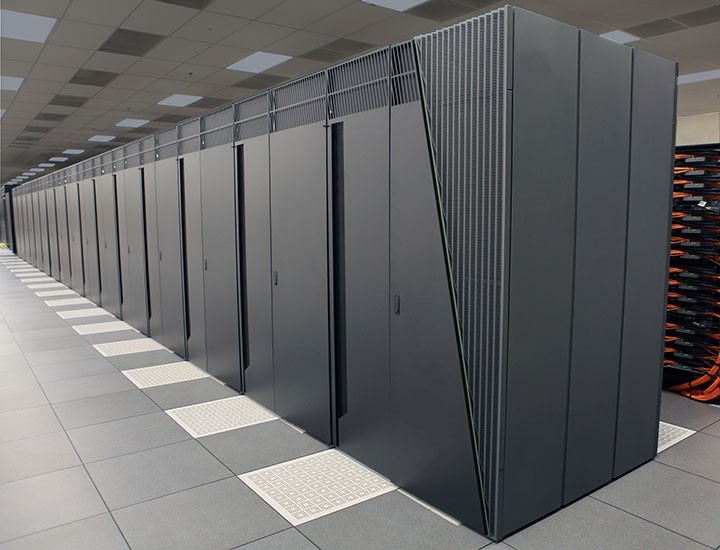Why SDDC (Software Defined Datacenter) is an unavoidable part of the future?

The emergence of the Software Defined Datacenter (SDDC) concept enables a flexible and fluid environment which will lead to the complete replacement of traditional roles held by isolated silos within the IT infrastructure until recently.
Even if the topic announced by the title is completely unknown to you I will try to paint you a picturesque everyday scene in order to make a smooth and painless transition into more serious “getting to know” phase. The need for the technology was created by no one else but ourselves. If you just take a stroll around the city you will encounter number of people, if not all of them, to whom mobile phone has become an integral part of almost everyday activities. You’re probably one of them, too.
With smart phones we can get almost every imaginable information in an instant. However, there is one more stream of data that should not be overlooked. Each day we also leave a lot of data about ourselves on the internet. Whether we are buying something, responding to surveys, updating your profiles on different social networks or watching videos, we have to be aware that all of these actions produce information about us that are stored somewhere. If, on top of this, we add the usage of desktop and laptop computers for other private or business purposes, it becomes clear that we are talking about very large amount of information which is collected through various uses of Internet functionalities.
When data is placed in some, for that purpose, intended “warehouse”, that will not be the end of their activity. On the contrary!
Only then do they begin to live through further processing, grouping and analysis. Based on it, companies draw conclusions about the behavior of existing or potential clients and create strategies and plans for future growth and business development.
Since data growth is exponential, systems that store them must surely be of an impressive sizes. Servers that handle and manipulated them are even more than that. The maintenance of such structures is not the cheapest nor the most effective solution, both for companies’ operation and for the environment. Imagine only the physical dimensions of such an infrastructure.
As one of the responses to these challenges the development of Cloud technology has additionally altered the companies’ expectations from the software and hardware support provided by their IT infrastructure.
The main task of IT companies is to deliver the expected improvements in the quality and speed of service and to be an adequate response to the amount of data that is exchanged and processed on a daily basis.
The emergence of the Software Defined Datacenter (SDDC) concept enables a flexible and fluid environment which will lead to the complete replacement of traditional roles held by isolated silos within the IT infrastructure until recently.
With SDDC, the infrastructure consists of 3 parts which is virtualized and delivered as a service:
- Computer virtualization,
- Software define network and
- Software define storage.
Control function is fully automated and the entire solution is maintained by intelligent software systems. All this allows companies to use the unique capabilities of this hybrid cloud technology with efficiency, agility and security as never before.
Users, to whom IT is only a supporting business process, want to get functionality from their datacenter as they receive from cloud services with security of in housesolutions.
Digital transformation has led to an interesting phenomenon – the loss of a clear line of privacy. Everything that is posted on the Internet and public networks is stored and processed somewhere. On the other hand, questions have been raised on account of point of data control in the case of cloud solutions.
This is another reason why the SDDC became interesting. With this solution, the user has the flexibility offered by cloud technology but also much needed security since all data is still locally stored.
Our users do not want to think about infrastructure and do not want to spend a lot of time on the implementation of new services. They want to get what they need in an easy and affordable manner without excessive spending of financial, human and time resources.
The basic idea of this concept is to abandon the standard Vendor approach which implies the existence of dedicated devices and specially trained teams. Another goal is to allow any non-specialized commodity hardware device, with the help of software management, to replace the overwhelming and complicated infrastructure.
This eliminates a large part of the cost and simplifies the user interface that facilitates daily operation and maintenance.
On the other hand, there is a concern that experts, who have been so far engaged on the maintenance of infrastructure, may become obsolete. Much of their existing work is shifted to software and significantly simplified so there is no longer a need for the same number of people in order to ensure the smooth functioning of the datacenter. Everything is done faster, more efficiently and with less engagement of human resources.
Fortunately, the automation of day-to-day operations gives the experts the opportunity to move their free time to new and creative processes which can contribute much more to the company’s operations. The reason for this is plain and simple. IT is no longer just a help for the company’s business but its integral part.
Serbian market is just getting to know these technologies. Several of our users have been successfully implemented parts of SDDC (software define network and software define storage) while others have a significant interest in getting to know all the features and benefits that it offers.
Although the implementation of the complete solution is quite demanding, both from the point of user acceptance and time needed for the change to take place, Software Defined Datacenter is a future that we cannot and should not postpone.
Anton Pavlovich Chekhov[/kswr_iconboxinfo]
